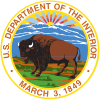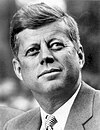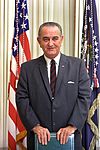Stewart Udall: Difference between revisions
m Reverted edits by 78.183.218.246 (talk) to last revision by Nicolehh (HG) |
No edit summary Tag: repeating characters |
||
| Line 32: | Line 32: | ||
==Early life and career== |
==Early life and career== |
||
Born in [[St. Johns, Arizona]], he was the son of [[Levi Stewart Udall]]. He was educated at the [[University of |
Born in [[St. Johns, Arizona]], he was the son of [[Levi Stewart Udall]]. He was educated at the [[University of ArizonaİNCİİİİİİİİİİİİİİİİİİİİİİİİİİİİİİİİİİİİİİİİİİİİİİİİİİİİİİİİİİİİİİİİİİİİ |
||
Udall became increasingly active in [[Public administration|public service]], being elected to the [[Board of education|School Board]] of [[Amphitheater Public Schools]] (District 10) in [[Tucson]] in June 1951. He became the President of Amphitheater School Board in 1952. Udall also served as [[United States House of Representatives|U.S. Representative]] from [[Arizona]] from 1955 to 1961. |
Udall became increasingly active in [[Public administration|public service]], being elected to the [[Board of education|School Board]] of [[Amphitheater Public Schools]] (District 10) in [[Tucson]] in June 1951. He became the President of Amphitheater School Board in 1952. Udall also served as [[United States House of Representatives|U.S. Representative]] from [[Arizona]] from 1955 to 1961. |
||
Revision as of 10:53, 28 June 2010
Stewart Udall | |
|---|---|
 | |
| 37th United States Secretary of the Interior | |
| In office January 21, 1961 – January 20, 1969 | |
| President | John F. Kennedy Lyndon B. Johnson |
| Preceded by | Fred Andrew Seaton |
| Succeeded by | Walter Joseph Hickel |
| Member of the U.S. House of Representatives from Arizona's 2nd district | |
| In office January 3, 1955 – January 21, 1961 | |
| Preceded by | Harold Patten |
| Succeeded by | Mo Udall |
| Personal details | |
| Born | January 31, 1920 St. Johns, Arizona |
| Died | March 20, 2010 (aged 90) Santa Fe, New Mexico |
| Political party | Democratic |
| Spouse | Irmalee Webb Udall |
| Children | Tom, Scott, Denis, Jay, Lynn and Lori |
| Alma mater | University of Arizona |
| Military service | |
| Branch/service | United States Army Air Corps |
| Unit | Fifteenth Air Force |
| Battles/wars | World War II |
Stewart Lee Udall (January 31, 1920 – March 20, 2010[1][2]) was an American politician. He served as Secretary of the Interior from 1961 to 1969, under Presidents John F. Kennedy and Lyndon B. Johnson.[3]
Early life and career
Born in St. Johns, Arizona, he was the son of Levi Stewart Udall. He was educated at the [[University of ArizonaİNCİİİİİİİİİİİİİİİİİİİİİİİİİİİİİİİİİİİİİİİİİİİİİİİİİİİİİİİİİİİİİİİİİİİİ Udall became increasingly active in public service, being elected to the School Board of Amphitheater Public Schools (District 10) in Tucson in June 1951. He became the President of Amphitheater School Board in 1952. Udall also served as U.S. Representative from Arizona from 1955 to 1961.
Secretary of the Interior
Udall served as Secretary of the Interior under Presidents John F. Kennedy and Lyndon B. Johnson from 1961 to 1969, when he described his nation's ecological attitudes as the "myth of superabundance".[4]
He lent his support and advice to one of the earliest efforts to save a complex natural resource, The Great Swamp of New Jersey. After a year-long legal battle that pitted local residents against the powerful New York Port Authority officials who wished to turn the Great Swamp into a major regional airport to replace Newark Airport with one that could accommodate large jet aircraft. The Jersey Jet Site Association was the first to form in opposition and it was followed closely by the North American Wildlife Foundation. Between the two organizations, enough property in the core of the swamp quickly was purchased, assembled, and donated to the federal government to qualify for perpetual protection as a park. The Great Swamp National Wildlife Refuge was established by an Act of Congress on November 3, 1960. As the congressman from Arizona and later as the Secretary of the Interior, Stewart Udall, championed the efforts of these residents, whom he described as having mounted the greatest effort ever made by residents in America to protect a natural habitat.
Later, the effort was mentioned frequently in his discussions of the environmental issues that needed to be resolved before irreplaceable resources were lost and the commitment of citizens to protect them. This federal refuge consists of 7,600 acres (31 km2) or almost 12 square miles (30.4 km²) of varied habitats in the center of a fifty-five square mile watershed. The Great Swamp is a migration-resting and feeding area or permanent habitat for more than 244 species of birds. The major routes of birds migrating along the eastern portion of the United States follow the corridor that includes the Great Swamp as a major stopping place for rest and nutrition. Many species of insects, animals, and birds reside permanently in the watershed area. Its role in draining the region and absorbing quick floods for gradual release can be critical during extreme weather conditions.
Udall was largely responsible for the enactment of environmental laws in Johnson's Great Society legislative agenda, including the Clear Air, Water Quality and Clean Water Restoration Acts and Amendments, the Wilderness Act of 1964, the Endangered Species Preservation Act of 1966, the Land and Water Conservation [Fund] Act of 1965, the Solid Waste Disposal Act of 1965, the National Trail System Act of 1968, and Wild and Scenic Rivers Act of 1968.
It was also during Udall's tenure as Secretary of the Interior when, in September 1962, he was summoned unexpectedly into a meeting with Soviet Premier Nikita Khrushchev during a tour of the Soviet Union. It was during this meeting that Khrushchev famously hinted at his secret deployment of nuclear missiles to Cuba by telling Udall that: "It's been a long time since you could spank us like a little boy. Now we can swat your ass." This was a prelude to the Cuban Missile Crisis.[5]
Energy Policy
In October 1972, Udall published a seminal article[6] in The Atlantic Monthly, called "Too many cars, too little oil. An argument for the proposition that 'less is more'" that foresaw problems with US transportation and energy policy and competition with emerging markets for scarce resources.[7]
In 1974, Udall, along with Charles Conconi and David Osterhout, wrote "The Energy Balloon", discussing the United States' energy policies.
Family
Stewart Udall was married to Irmalee Webb (died in 2001) with whom he had four sons (Tom, Scott, Denis and Jay) and two daughters (Lynn and Lori).
He was the brother of U. S. Representative and 1976 presidential candidate Mo Udall; he served as Mo's campaign manager during the primary election, which Mo lost to Jimmy Carter. Stewart Udall's son Tom Udall and nephew Mark Udall (Mo`s son), both former U.S. House Representatives, have been sent to the United States senate from New Mexico and Colorado, respectively after victories in the 2008 elections.
Other information
- Point Udall, the easternmost place in the United States, was named for him.
- He described himself as a Jack Mormon.[1][2]
- He was the author of numerous books, including his most well known, The Quiet Crisis, published in 1963. In 1968 Udall received an LL.D. from Bates College.
- He was featured in the documentary The National Parks: America's Best Idea.
- Udall's death left W. Willard Wirtz as the last surviving member of John F. Kennedy's cabinet. Udall was the last surviving original member of Kennedy's cabinet.
- The United States Department of the Interior Building is named the "Stewart Lee Udall Department of the Interior Building"
See also
References
- ^ Statement from the Udall Family, March 20, 2010, retrieved March 20, 2010
- ^ Stewart L. Udall, 90, Conservationist in Kennedy and Johnson Cabinets, Dies. New York Times, March 20, 2010. Accessed March 21, 2010
- ^ Obituary Los Angeles Times, March 21, 2010; page A39.
- ^ Vanity Fair, May 2007 issue 561, p. 163
- ^ Niall Ferguson, "The War of the World: Twentieth-Century Conflict and the Descent of the West", New York: Penguin Books, 2006, pp. 600-601
- ^ Goodman, Robert (2008-11-16), "Have You Driven a Bus or a Train Lately?", New York Times, pp. WK14
- ^ Udall, Stewart (October 1972), "Too many cars, too little oil. An argument for the proposition that "less is more"", The Atlantic Monthly, retrieved 2008-11-16
External links
- United States Congress. "Stewart Udall (id: U000002)". Biographical Directory of the United States Congress.
- Stewart Udall: Renaissance Man by Terry Bracy & Ellen Wheeler in the Arizona Journal of Environmental Law & Policy
- New York Times Obituary
- 48 minute video of Stewart Udall speaking at his kitchen table 9 months before his death
- Oral History Interviews with Stewart Udall, from the Lyndon Baines Johnson Library
- 1920 births
- 2010 deaths
- American Latter Day Saint politicians
- American military personnel of World War II
- American non-fiction writers
- Arizona Democrats
- Arizona lawyers
- Kennedy Administration cabinet members
- Lyndon B. Johnson Administration cabinet members
- Members of the United States House of Representatives from Arizona
- People from Apache County, Arizona
- Udall family
- United States Secretaries of the Interior
- University of Arizona alumni
- United States Army Air Forces soldiers



